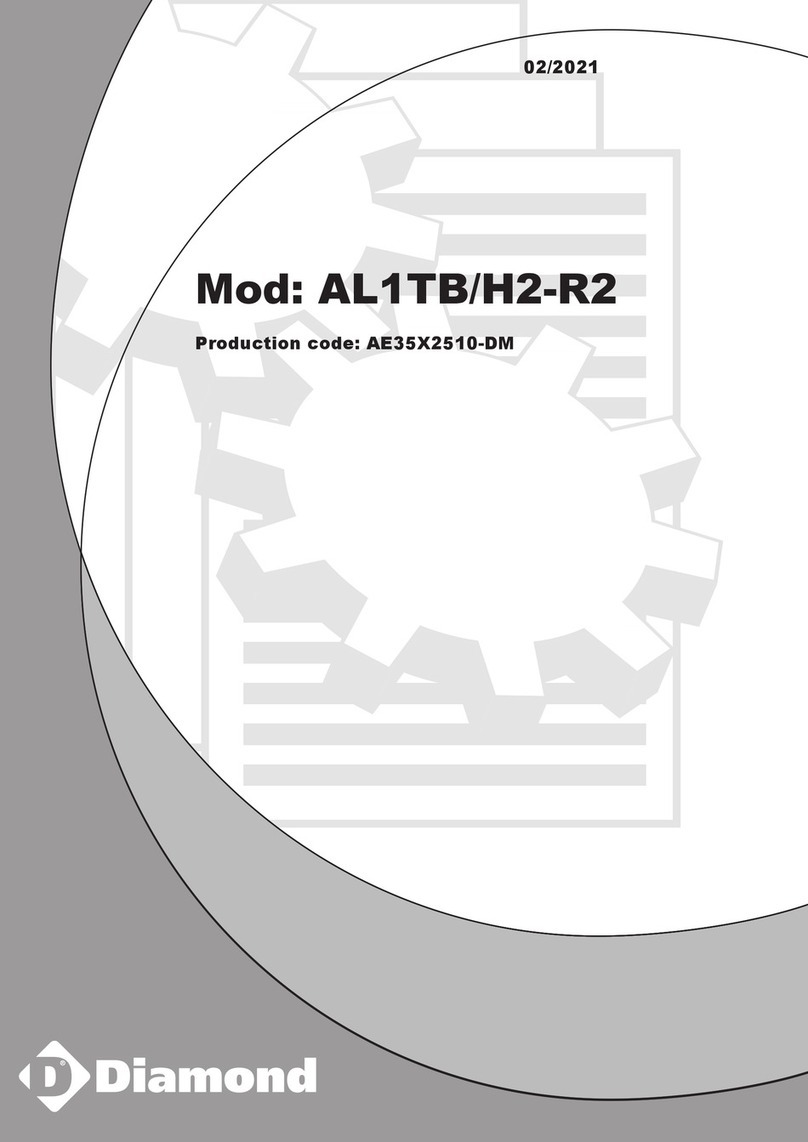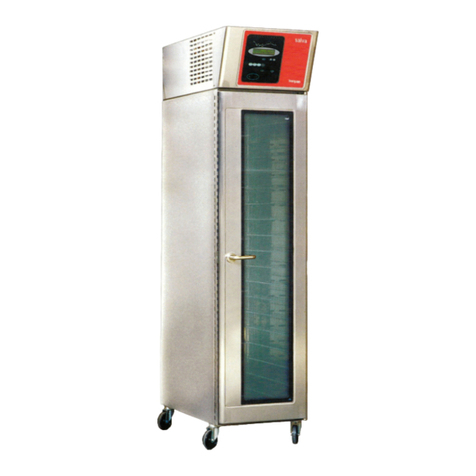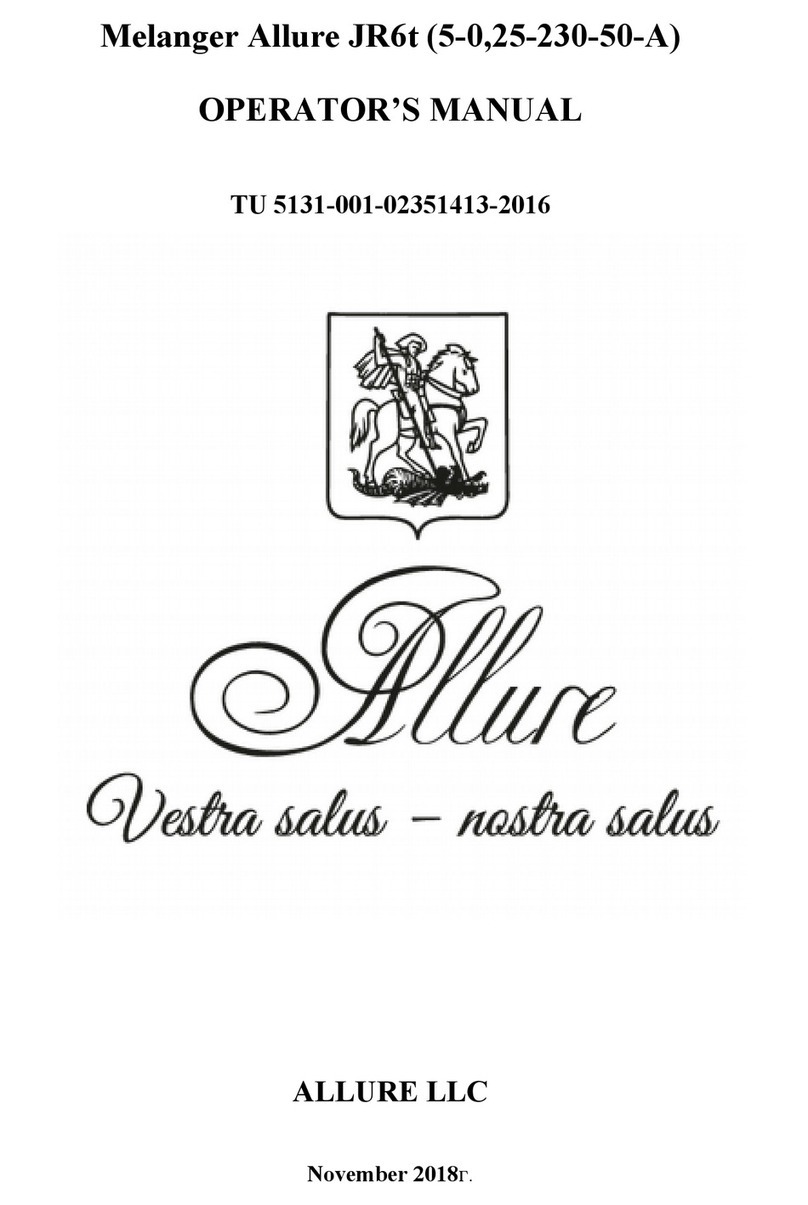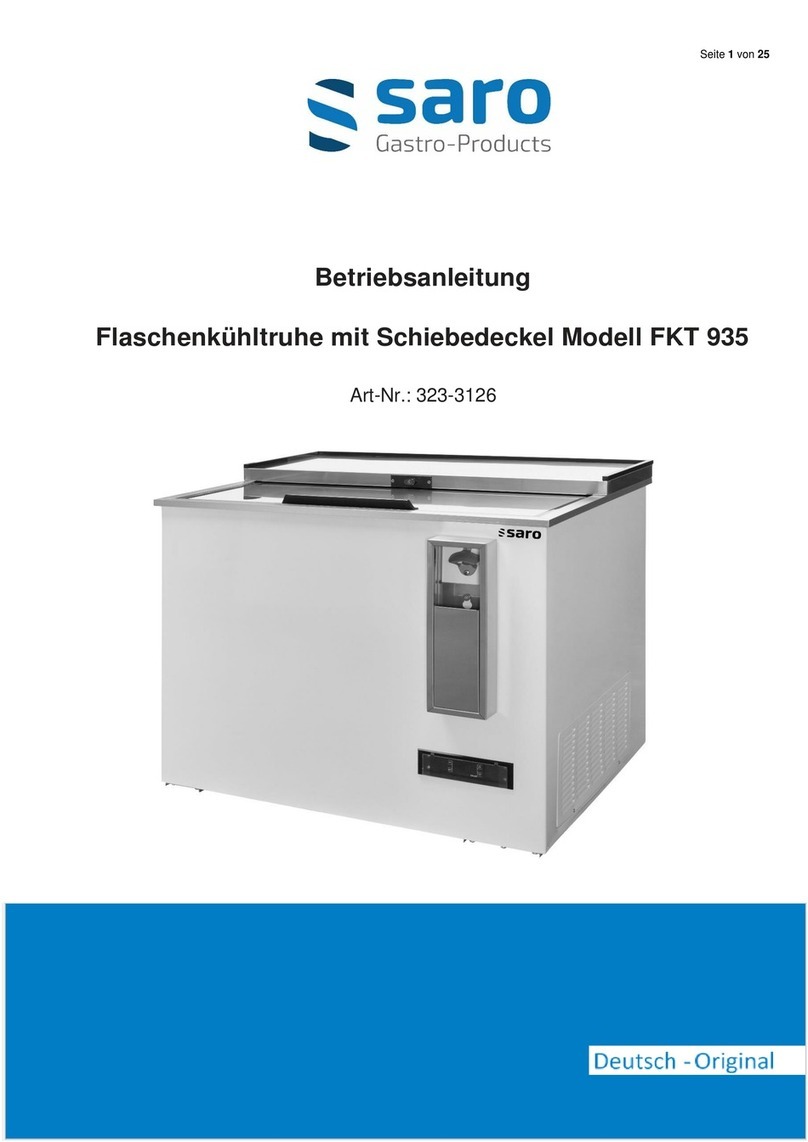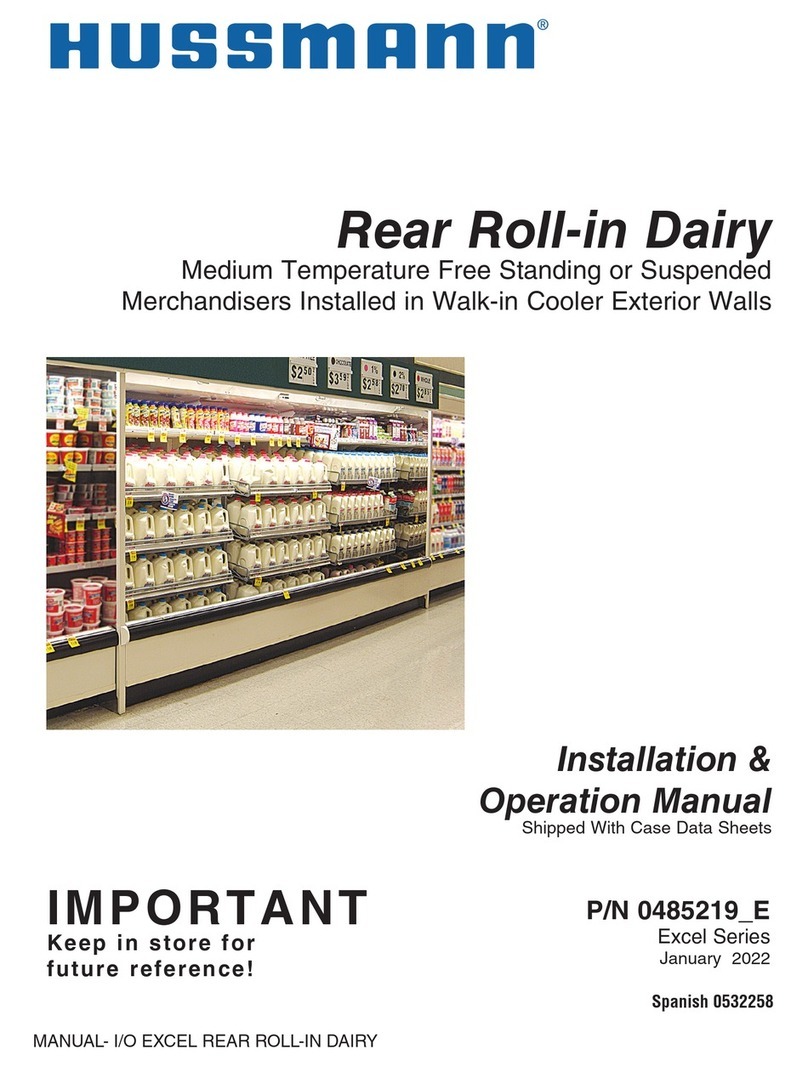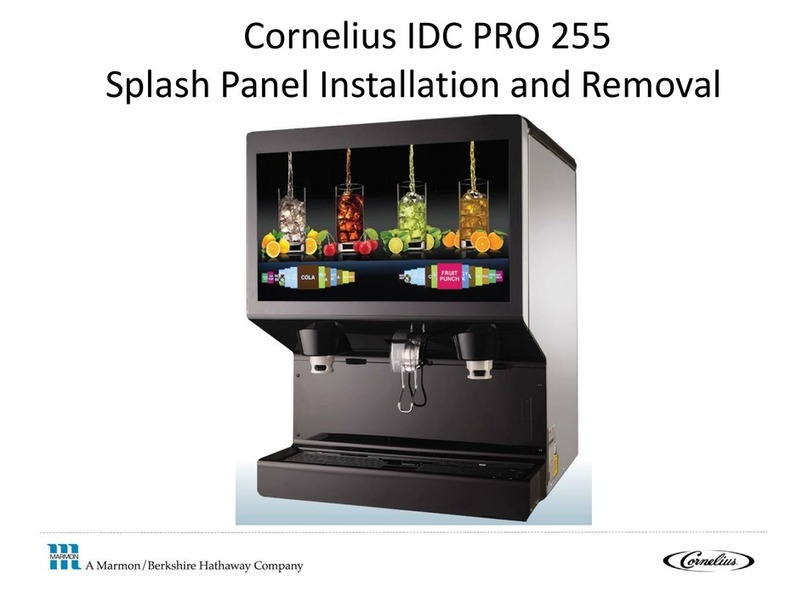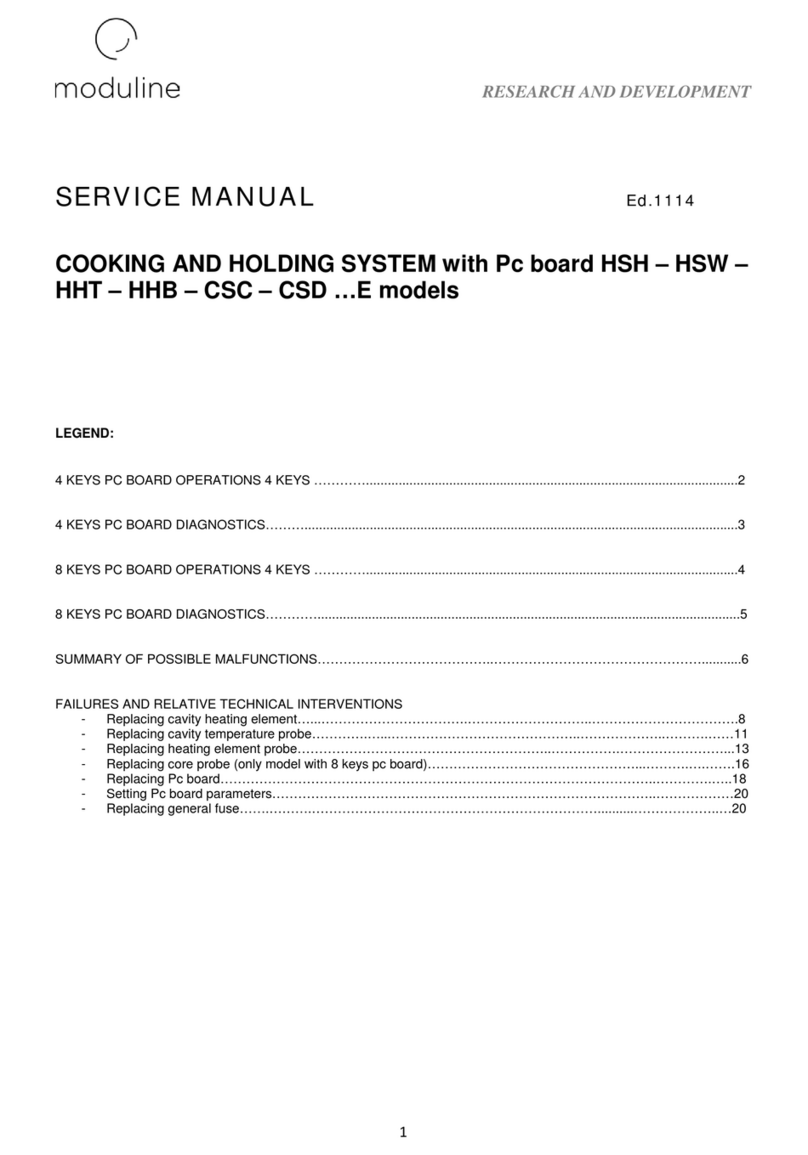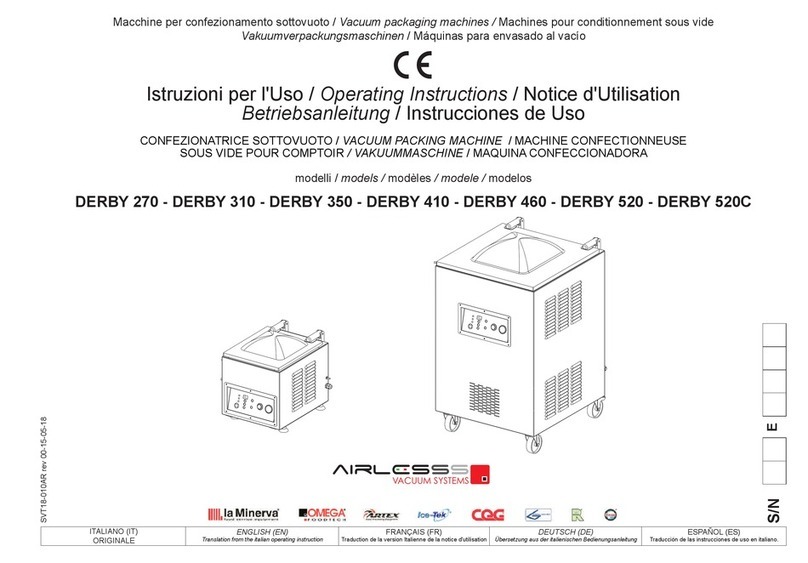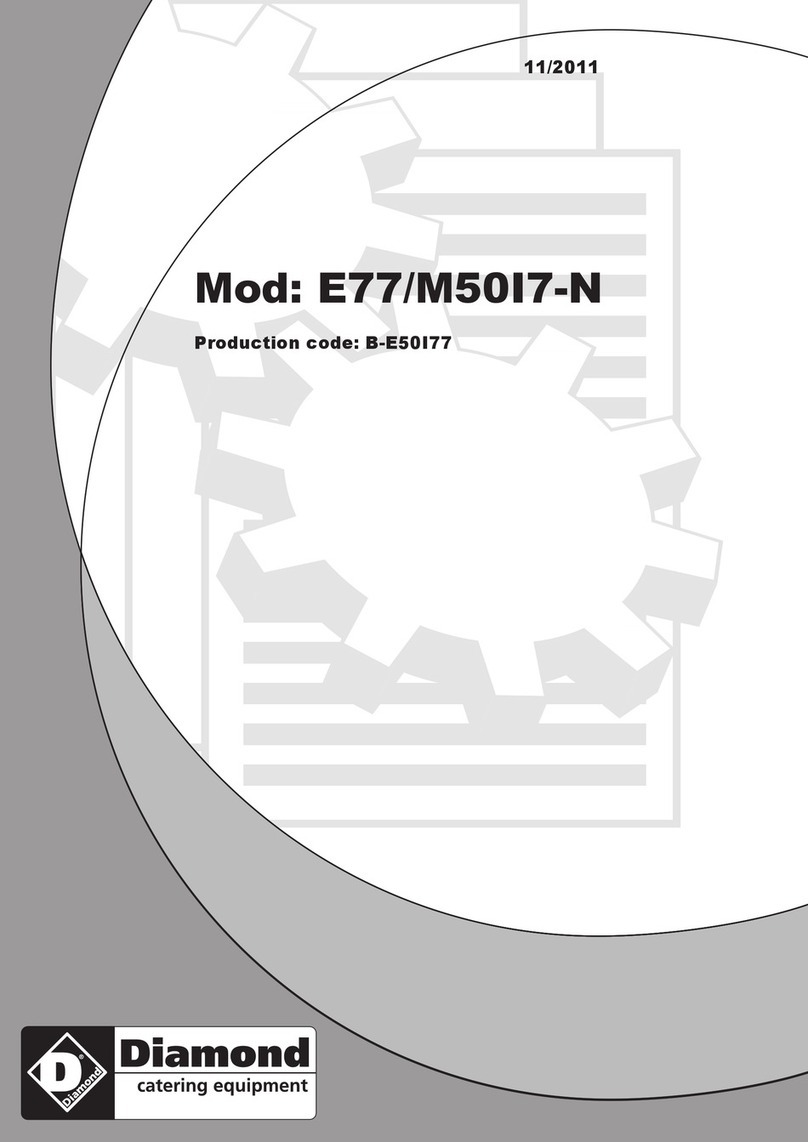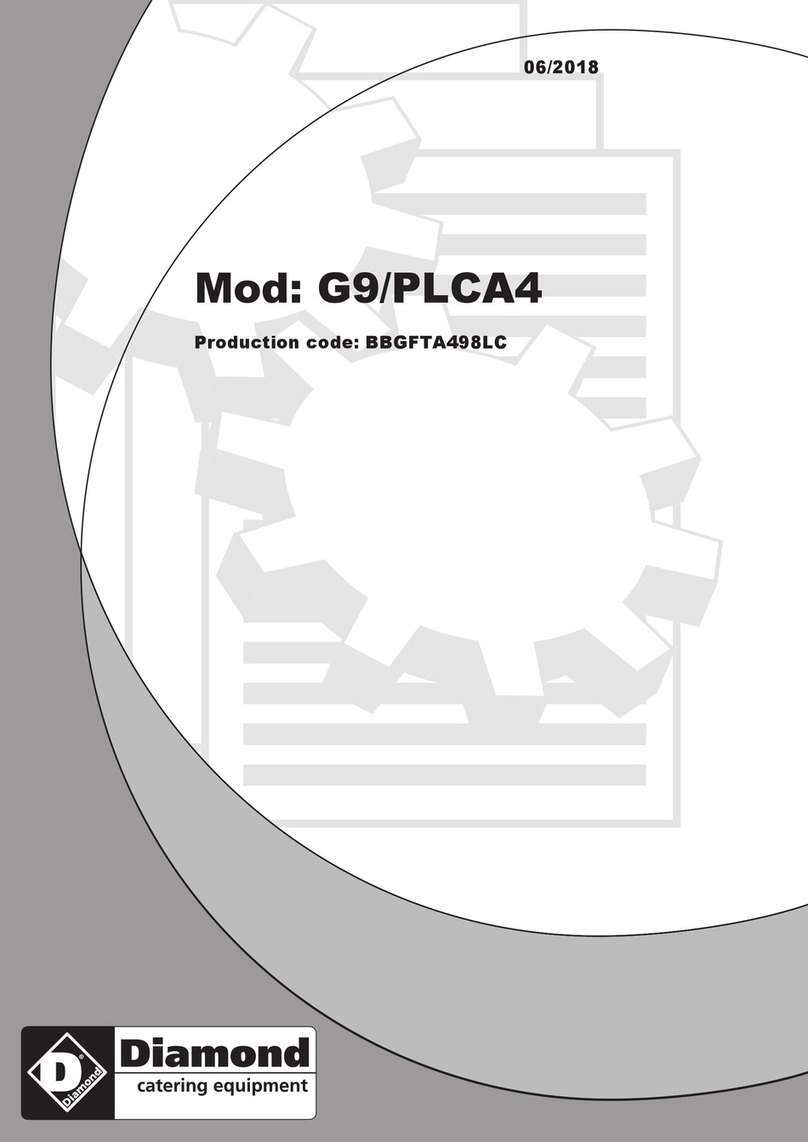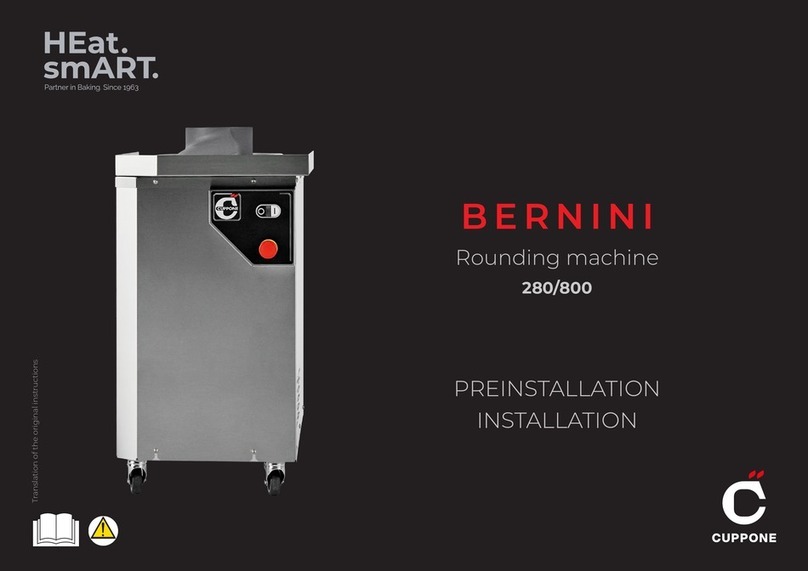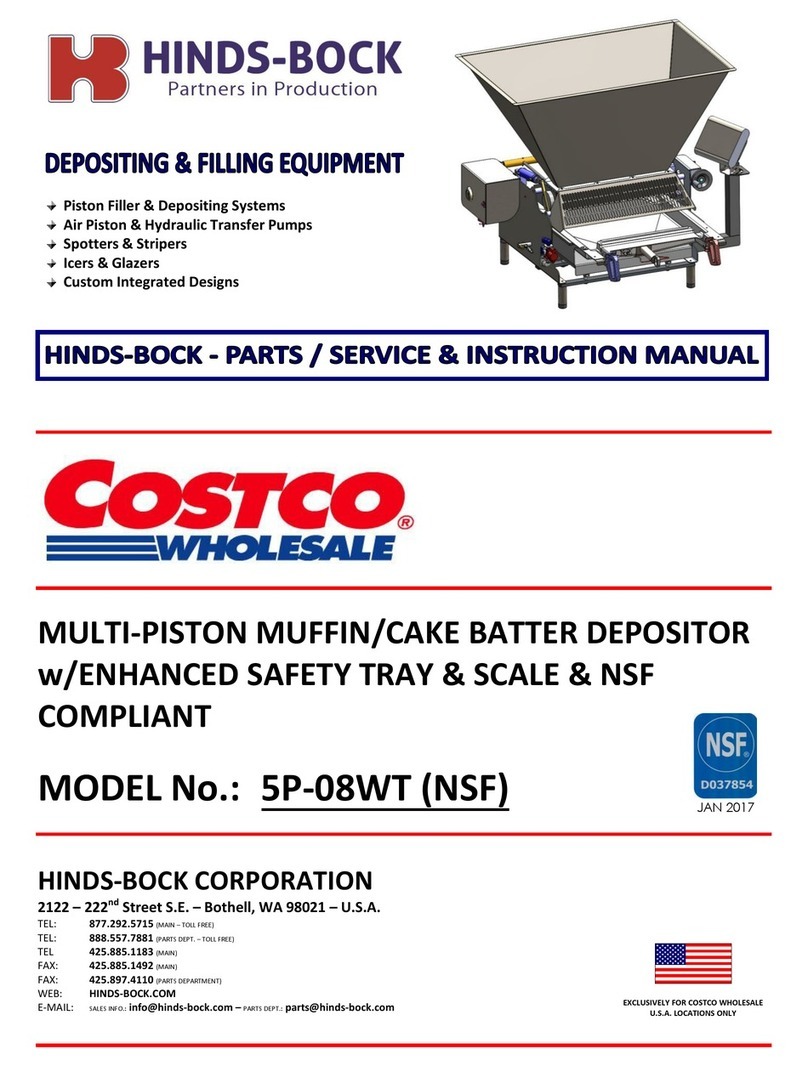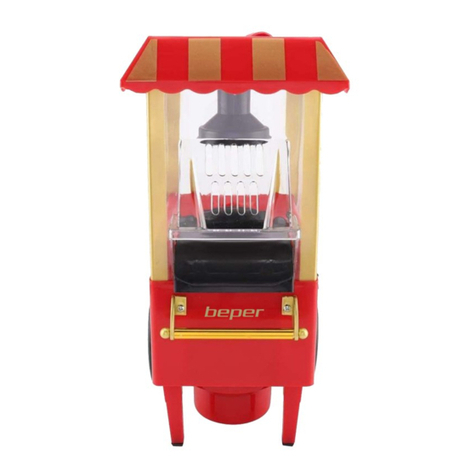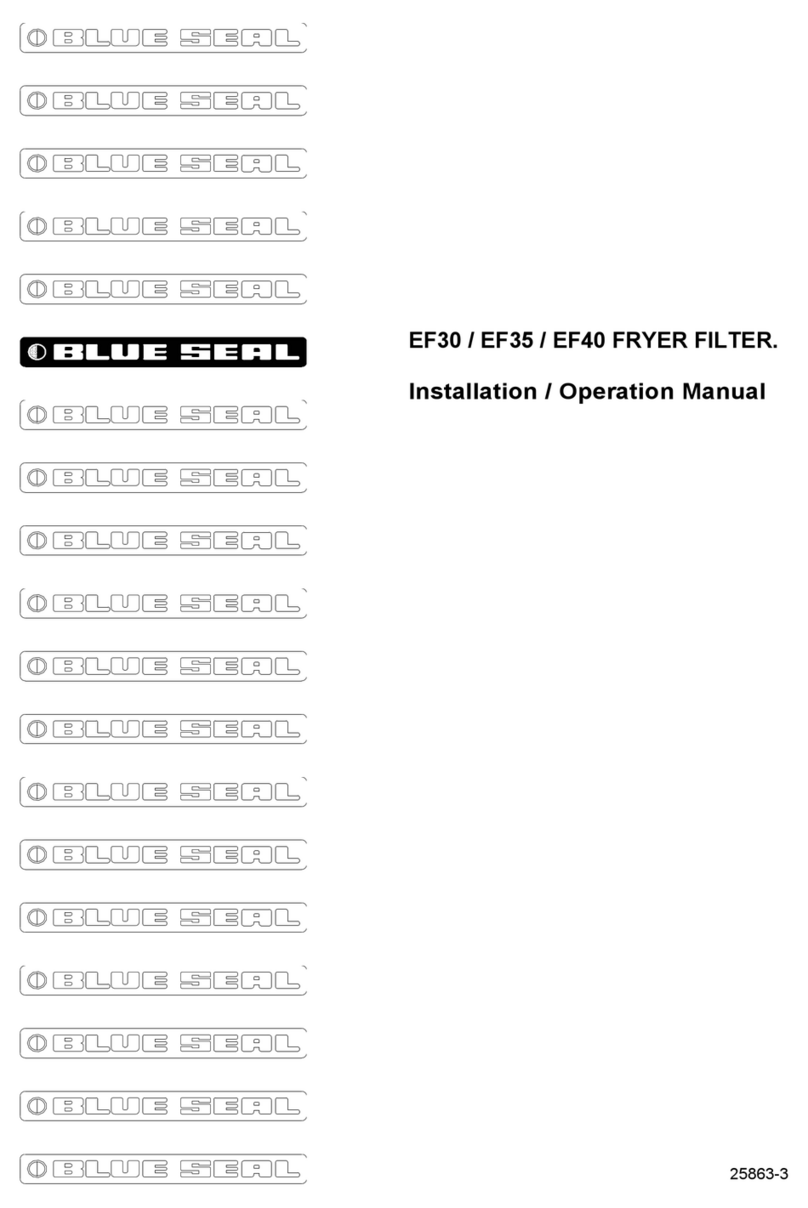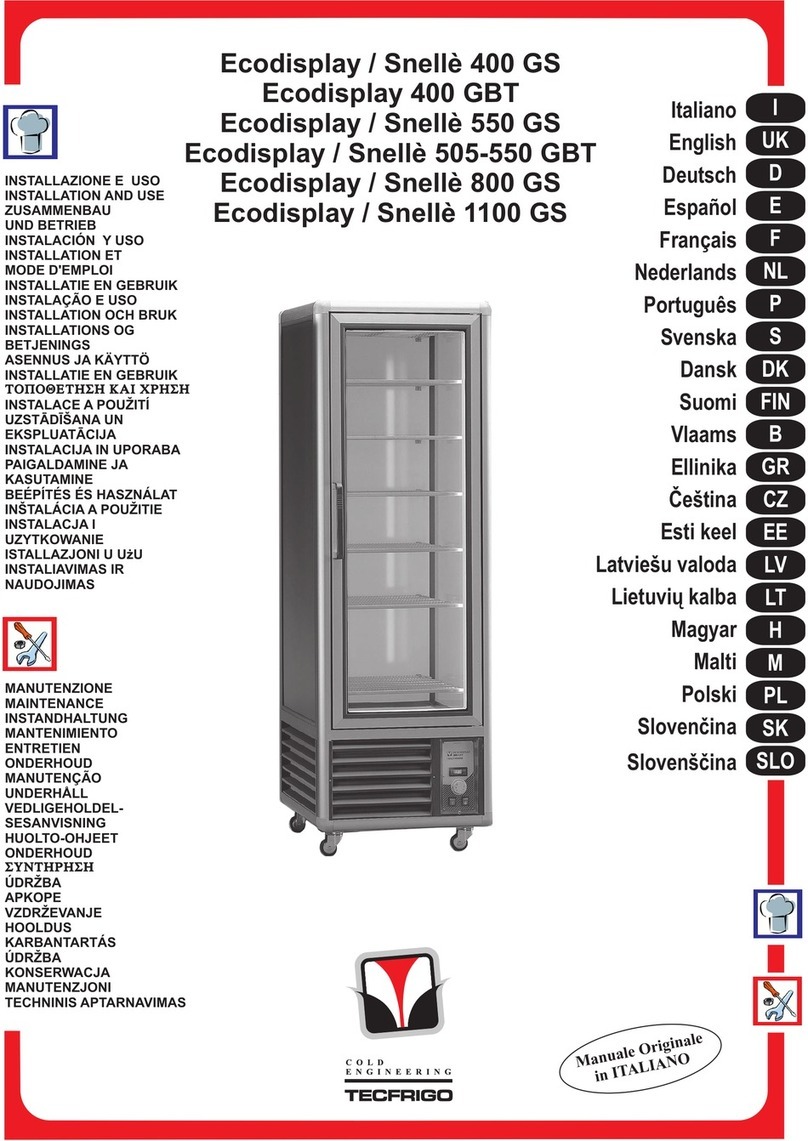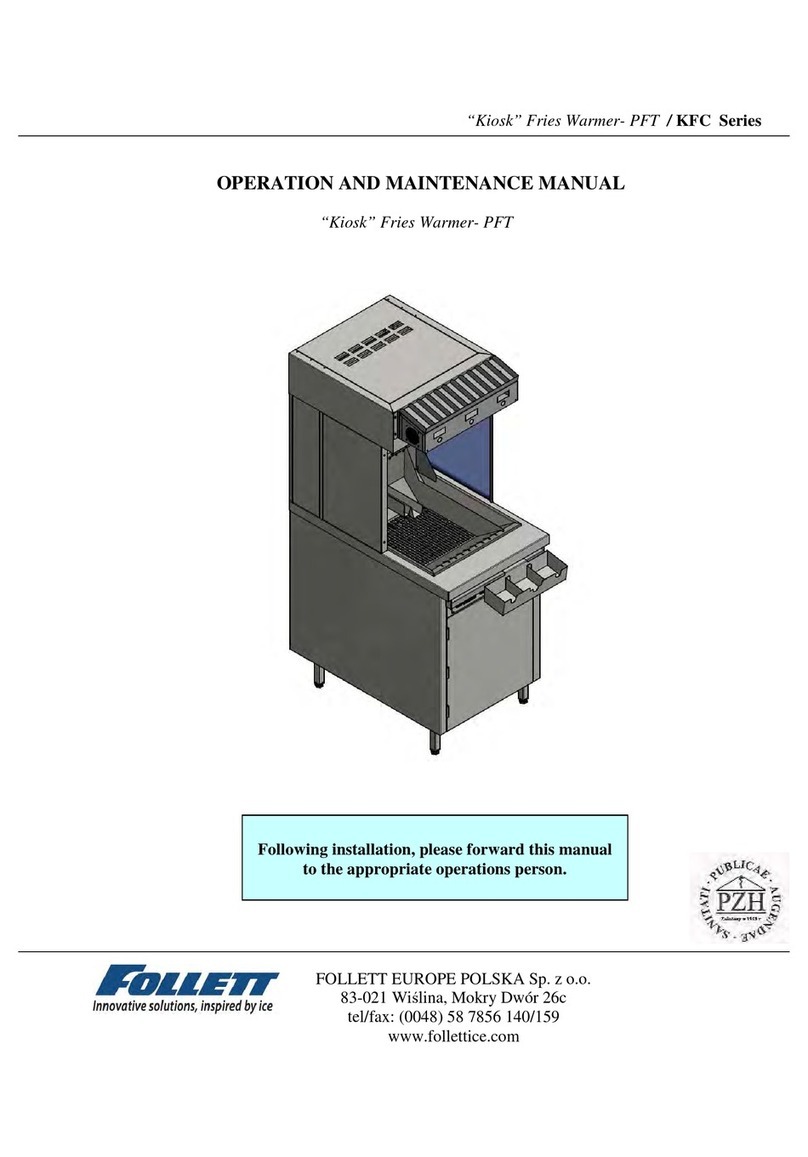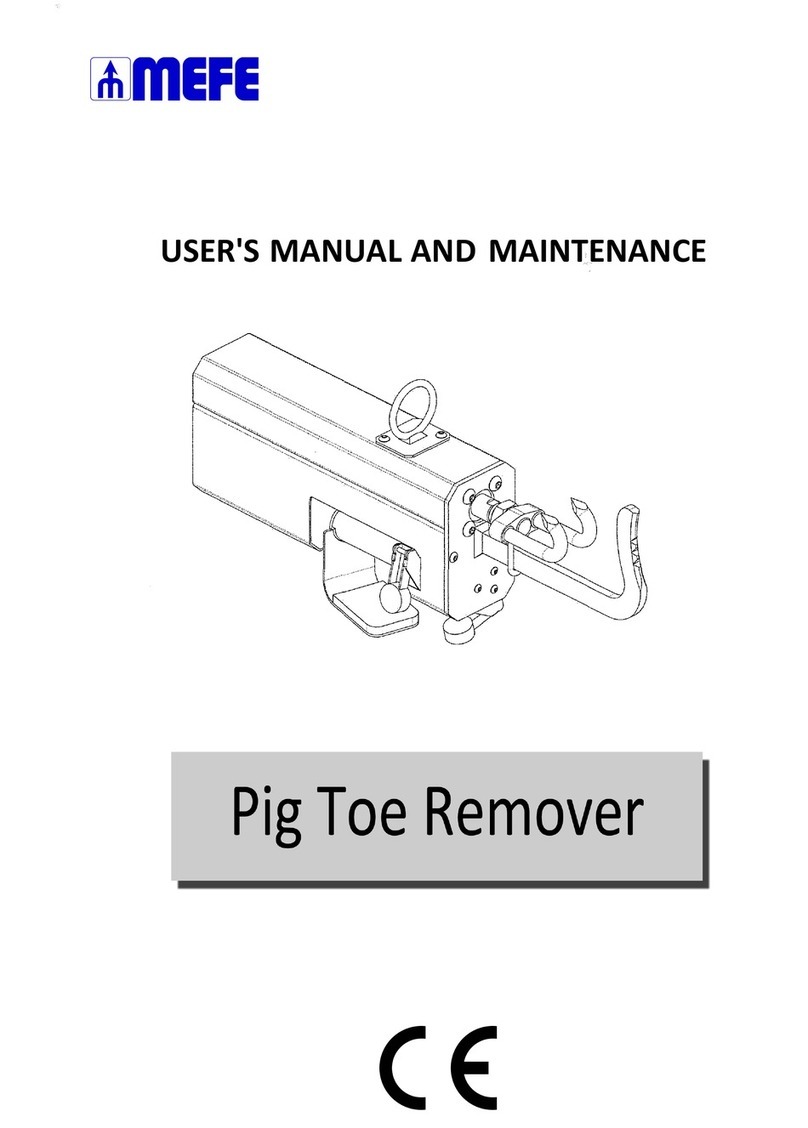
4
NOTE: The Model No. KFHP Series Hot Plates are not ETL
Certified Designs.
All FHP Series, STFHP Series, and KFHP Series Hot Plates
are for use in combustible and non-combustible locations when
installed on a non-combustible counter.
The BTU input rating on all equipment is calibrated for elevations
up to 2,000 feet above sea level. All orifice drill sizes are
referenced for operation at or below this altitude. For operation
at elevations above 2,000 feet, the BTU rating must be reduced
4% for each 1,000 feet of elevation or the orifice drill size must be
changed appropriately. For high altitude drill sizes, call your local
gas company or Factory Authorized Service Center.
All units are equipped with fixed orifices and cannot be adjusted.
If converting the gas appliance from natural to propane, or vice
versa, all orifices and the regulator must be changed. The correct
type of gas, for which the unit is configured, is noted on the
name plate. The type of gas specified MUST be used. For proper
conversion, contact a qualified service technician or your Factory
Authorized Service Center.
When installed with casters, adequate means of restraint must
be provided to limit the movement of the appliance without
depending on the connector and the quick disconnect device or its
associated piping to limit the units movement. The restraint should
be securely fastened to the back of the unit. If disconnection of
the restraint is necessary, the restraint must be reconnected after
the appliance has been returned to its original installation position.
For a gas appliance that is equipped with casters, the installation
shall be made with a connector that complies with the Standard
for Connectors for Moveable Gas Appliances, ANSI Z21.69 -1987,
and addenda Z21.69a -1989, and a quick disconnect device
the complies with the Standards for Quick Disconnect Devices
for Use With Gas Fuel, Z21.69 latest edition and Z21.41 - latest
edition.
Provisions shall be made in the design of the kitchen, to
ensure an adequate fresh air supply for proper ventilation and
combustion.
Do not obstruct the flow of combustion gases or ventilation air.
Never enclose the bottom of the unit with a raised curb and /or
any other construction that would obstruct the air flow into unit.
One of the most important considerations in the installation of this
unit is ventilation. A commerical gas appliance must be installed
so that the products of combustion are efficiently removed.
However, the kitchen ventilation system must not produce a draft
that would interfere with the proper operation of the burners.
The area around this and any other appliance must always
be kept free and clear of combustibles such as: grease, food
particles, fuel, solvents, cleaning fluids, gasoline, mops, rags, and
etc.
During installation, use thread compound sparingly. Always
use a compound that is impervious to chemical reaction with
propane gases. NEVER put any of the compound on the first two
outer threads. This will minimize the possibility of the compound
breaking free and clogging the pilots, burner orifices, and controls.
When a commerical gas appliance is first installed, the gas
pressure must be checked with a manometer by a qualified
service technician. This will ensure that the existing gas facilities
will deliver the BTU’s of gas required on the rating plate.
WARNING - If the appliance in configured for LP Gas, never
connect the equipment directly to the pressure tank. Damage
will result to the appliance if the tank pressure is not properly
regulated. The regulator supplied with your unit is a low pressure
(1/2 PSI max.) appliance regulator. For proper pressure regulation
specifications, consult your local Factory Authorized Service
Agency or an LP Gas Distributor.
INSTALLATION
THIS APPLIANCE IS INTENDED FOR OTHER THAN
HOUSEHOLD USE
All Comstock-Castle commerical gas appliances are manu-
factured by skilled craftsman using the finest quality materials.
PROPER installation by qualified personnel is essential for safe,
efficient, and trouble-free operation of the unit. Any alteration
and/or tampering, without proper knowledge, tools, and test
equipment, is DANGEROUS and will void all warranties.
The installation must conform with local codes, or in the absence
of locel codes, with the National Fuel Gas Code, ANSIZ223.1
- latest edition.
PRESSURE TESTING:
FAILURETO INSTALL PRESSURE REGULATOR WILLVOID
WARRANTY. (Most units have a convertible regulator.)
The appliance and its indivdual shut-off valve must be dis-
connected from the gas supply piping system during any
pressure testing of that system at test pressure in excess of
1/2 psig (3.45 kPa).
The appliance must be isolated from the gas supply piping
system by closing its individual manual shut-off valve during
any pressure testing of the gas supply piping system at test
pressures equal to or less than 1/2 psig (3.45 kPa).
NOTICE
The proper installation of this gas appliance is the total
responsibility of the end user.
It is the responsibility of the purchaser to determine that the
installer is qualified in installation procedures. Conversion,
connecting gas lines, calibrating thermostats, burners, lighters,
setting gas pressure with manometer, and etc., is all part of
normal installation and will not be paid for under warranty. If a
warranty technician is called out and finds the unit improperly
installed, the end user may be subject to billing.
FOR MAINTENANCE, SERVICE, REPAIRS, OR
INSTALLATION - Contact your dealer or the factory, for your
local Factory Authorized Service Agency.
INSTALLING THE BACKSPLASH OR HIGH SHELF:
To install a backsplash or high shelf on a Comstock-Castle Range,
proceed as follows:
1. Ensure back of unit is easily accessible.
2. If mounting low back (backsplash), slide into supports on back
of unit, and secure with #10 x 5/8” sheet metal screws.
3. If mounting high shelf, mount shelf to high back using #24 x
3/4” machine screws with nut and washer.
4. Slide backsplash into the side-supports on back of unit, and
secure with #10 x 5/8” sheet metal screws. (Fig. 1)
Figure 1
